Idea by
Alessandro Oltremarini
Call for ideas 2016
Human Island Project
Human Island Project
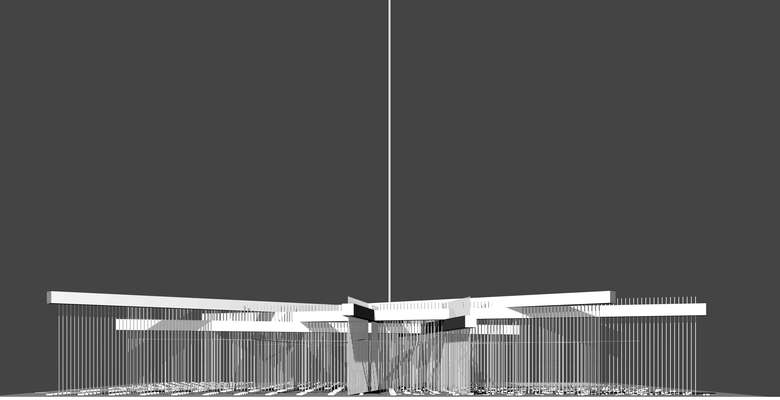
This is my thesis project. I think to a radical human migration from the land to water. This is possible if the humanity is an ideal community. If there is the presence of an hypertechnology aimed at the production and distribution of all goods, an economic system based on resources for all people. The money disappears and become unknow; the work, as the idea of fatigue, does not exist. So, change the meaning of family, of house, of all institutions. Return the nomadism.
These conditions have entailed a radical change in the personal planning approach of the new ideal habitat. Resetting the existing social and architectonic models, I have imagined an Habitat as an organism made up of three macro-entities from which three processes emerge to include all functions and services necessary to the beneficiary of the Island, an ideal human being.
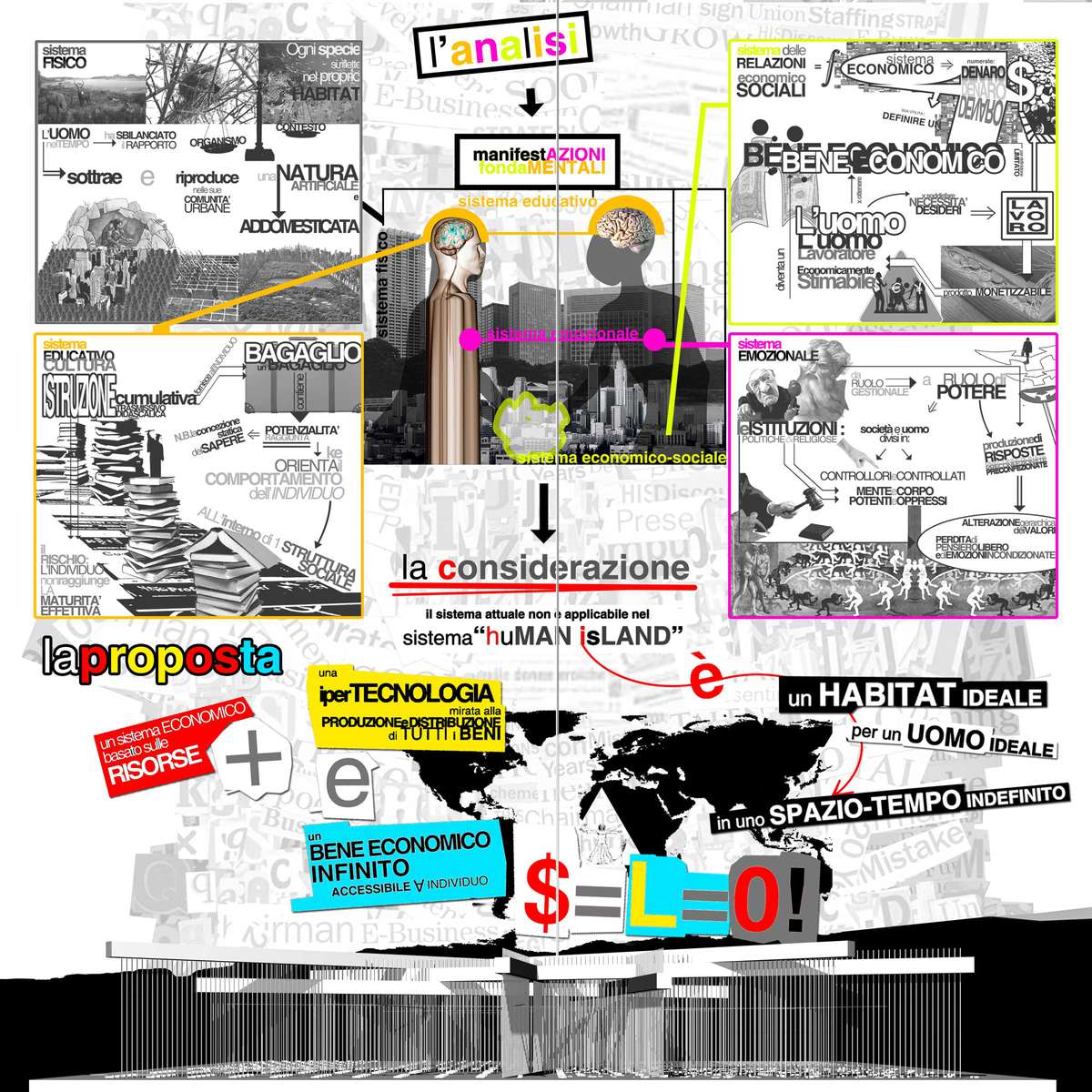
In the first stage, I have analyzed particular themes (fundamental manifestations of the human being), giving prominence to some critical points about human evolution, like the not naturalization of own habitat, the hierarchical modification of values and the distortion of some important concepts, like the education, the job, the market.
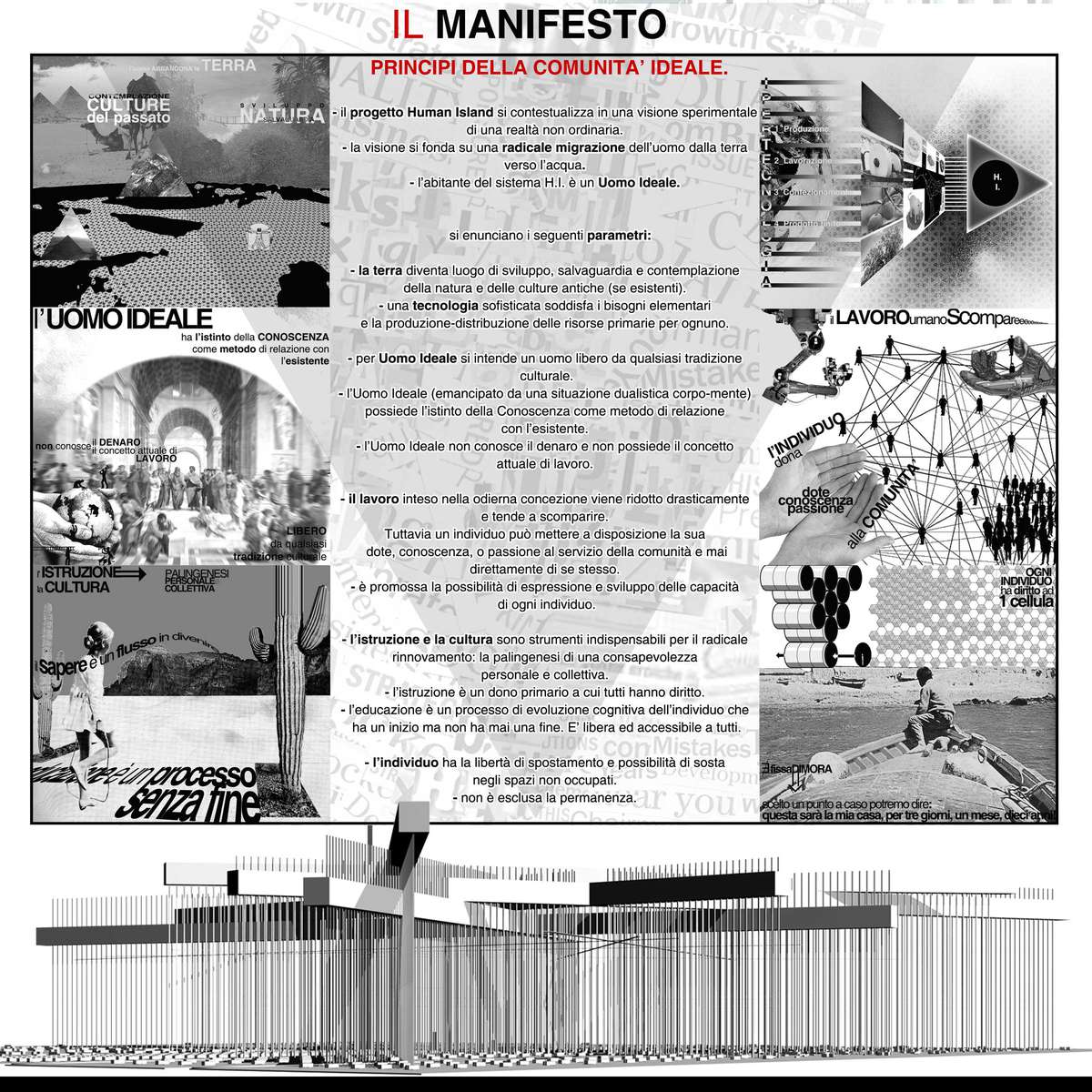
Subsequently, I have formulated a Manifesto that collects the principles of an ideal reality where the project is contextualized and it is founded on two essential conditions: a system based on the resources, a hyper-technology aimed for the distribution of assets and able to satisfy human needs.
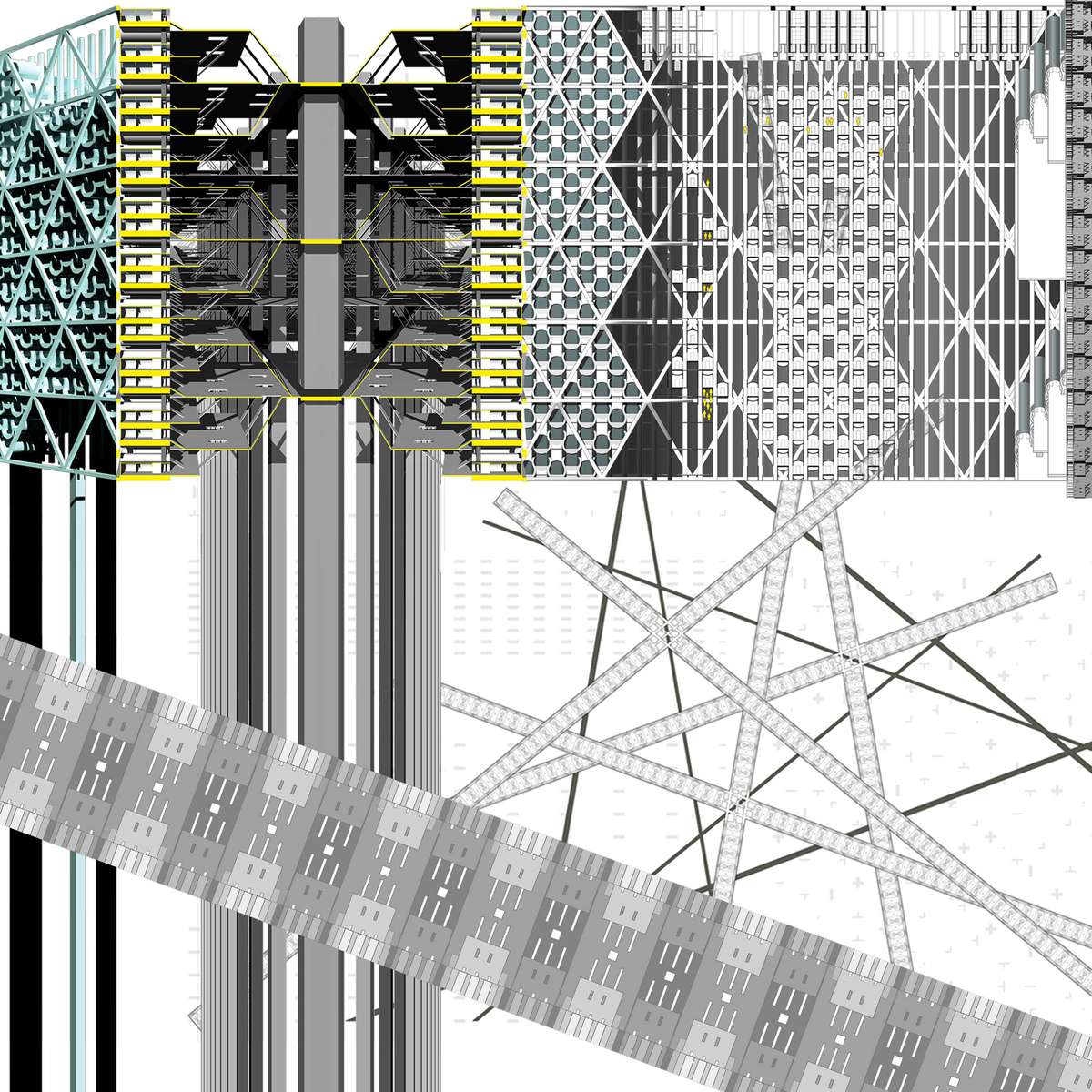
A_ Physiological Process: living cells_
Process of self-contamination and clash of macro-entities reduced to three points in the space, useful to define the skeleton plan that contains the living cells. Through ways that bring from the public sphere to the private one, the man is directed into the free cell.
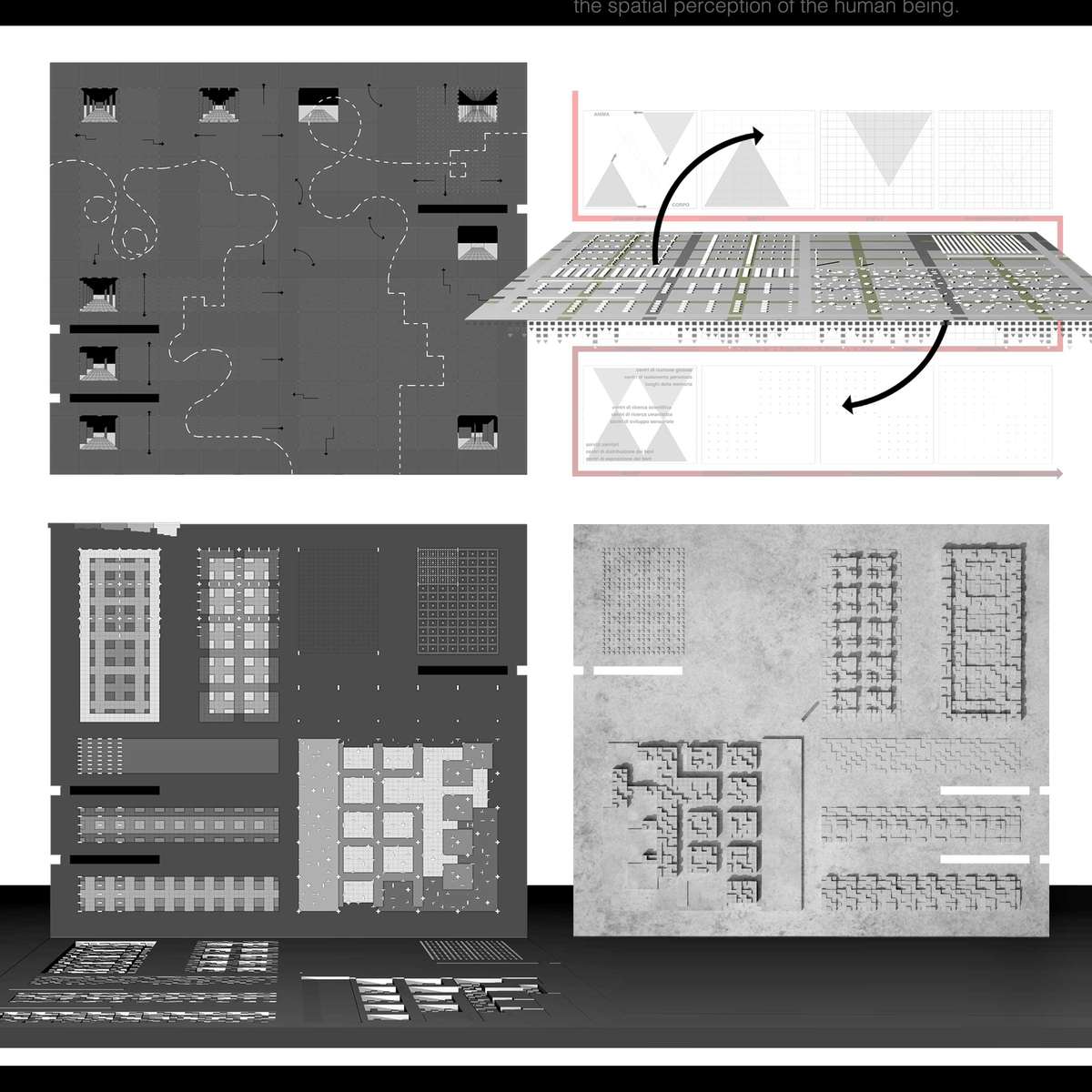
B_ Cognitive Process: the plate of services_
The proposal is an isotropic area in which the human being allows his own spatial perception to chose the process. The development is expected in depth and derives from the stratification of two schemes: for every scheme there is a level of depth and for every level there are three depths. The morphology of different fabrics is the synthesis of an analysis about the spatial perception of the human being.
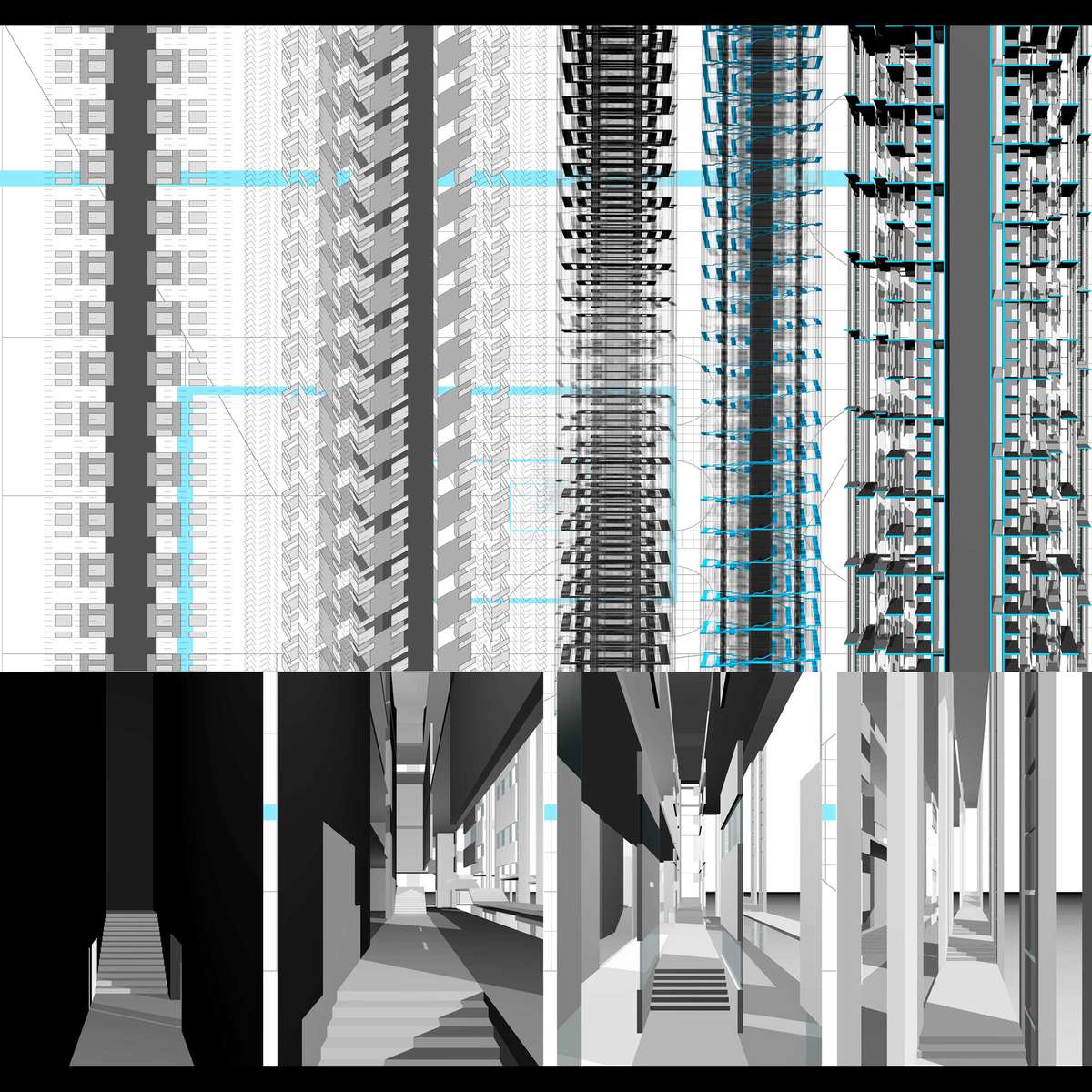
C_ Perceptive process: the tower_
A line traces out the boundary between two areas. It is an undefined limit in space and time; it is a shade that in the architectonic language becomes defragmentation. The defragmentation evolves in plan; the plan increases without limits in a symbolic way, to make the fourth dimension infinitive. The tower is a cemetery, a place of passage for an introspective way inside and more and more exposed outside, where the structure breaks up until to become empty.
Human Island Project
Human Island Project

This is my thesis project. I think to a radical human migration from the land to water. This is possible if the humanity is an ideal community. If there is the presence of an hypertechnology aimed at the production and distribution of all goods, an economic system based on resources for all people. The money disappears and become unknow; the work, as the idea of fatigue, does not exist. So, change the meaning of family, of house, of all institutions. Return the nomadism.
These conditions have entailed a radical change in the personal planning approach of the new ideal habitat. Resetting the existing social and architectonic models, I have imagined an Habitat as an organism made up of three macro-entities from which three processes emerge to include all functions and services necessary to the beneficiary of the Island, an ideal human being.
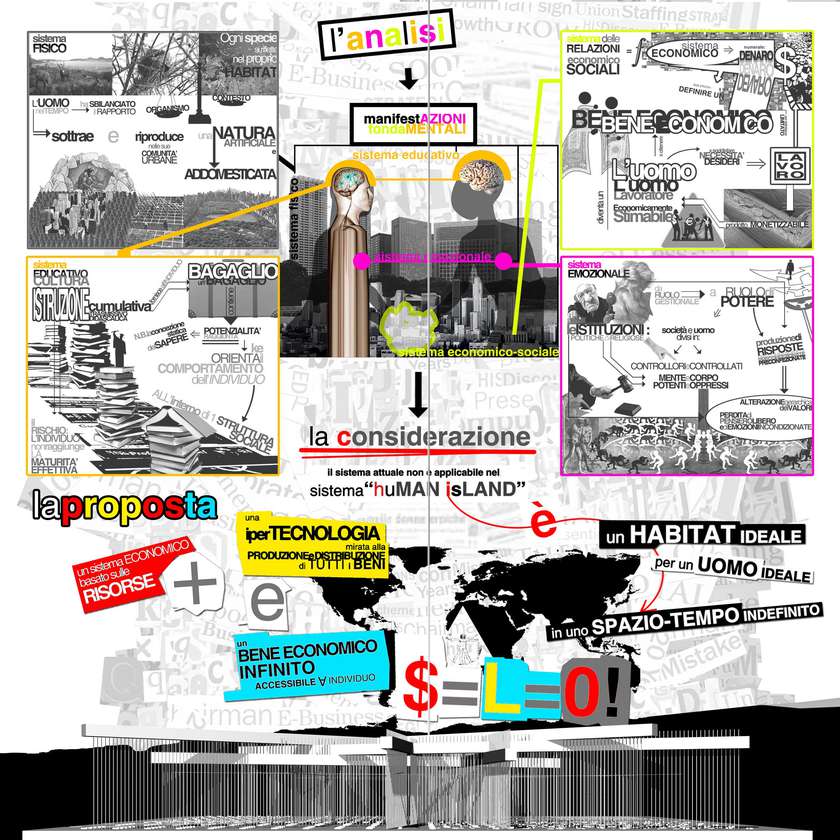
In the first stage, I have analyzed particular themes (fundamental manifestations of the human being), giving prominence to some critical points about human evolution, like the not naturalization of own habitat, the hierarchical modification of values and the distortion of some important concepts, like the education, the job, the market.
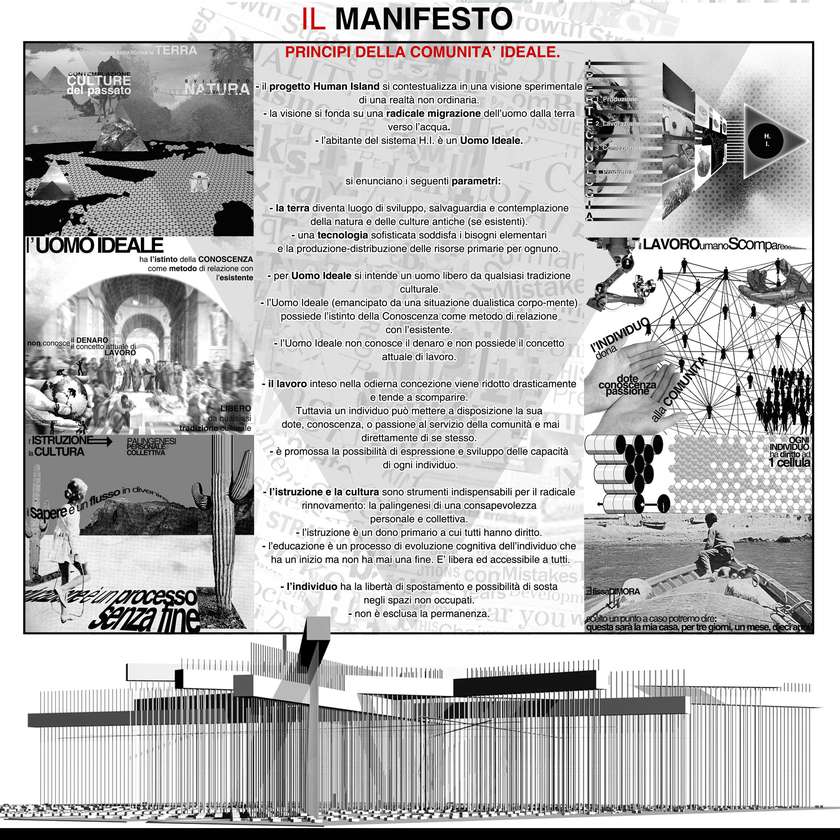
Subsequently, I have formulated a Manifesto that collects the principles of an ideal reality where the project is contextualized and it is founded on two essential conditions: a system based on the resources, a hyper-technology aimed for the distribution of assets and able to satisfy human needs.

A_ Physiological Process: living cells_
Process of self-contamination and clash of macro-entities reduced to three points in the space, useful to define the skeleton plan that contains the living cells. Through ways that bring from the public sphere to the private one, the man is directed into the free cell.
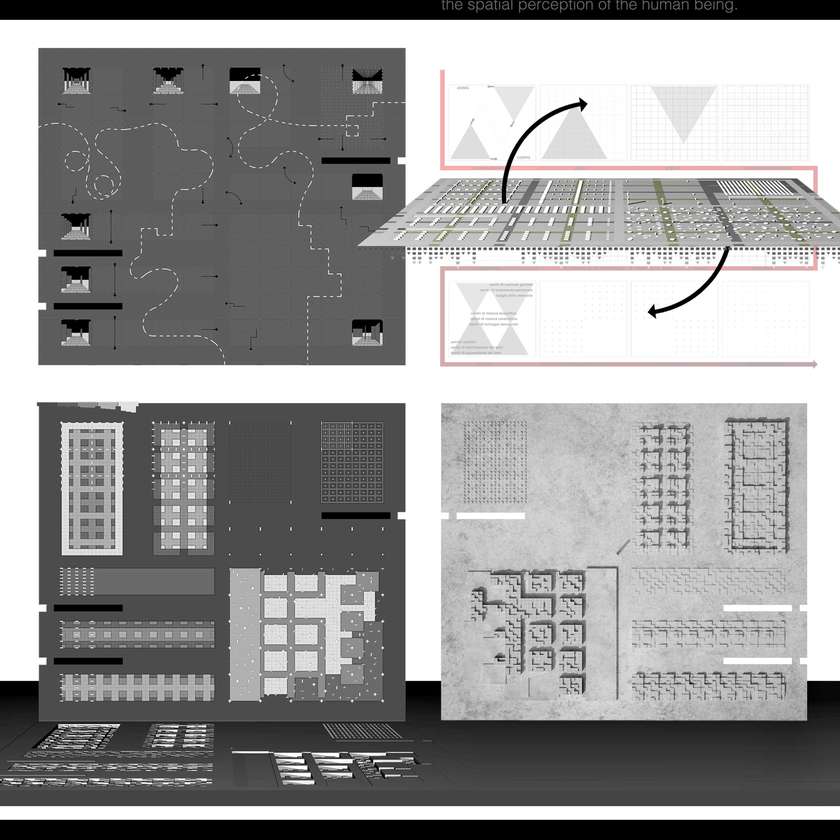
B_ Cognitive Process: the plate of services_
The proposal is an isotropic area in which the human being allows his own spatial perception to chose the process. The development is expected in depth and derives from the stratification of two schemes: for every scheme there is a level of depth and for every level there are three depths. The morphology of different fabrics is the synthesis of an analysis about the spatial perception of the human being.
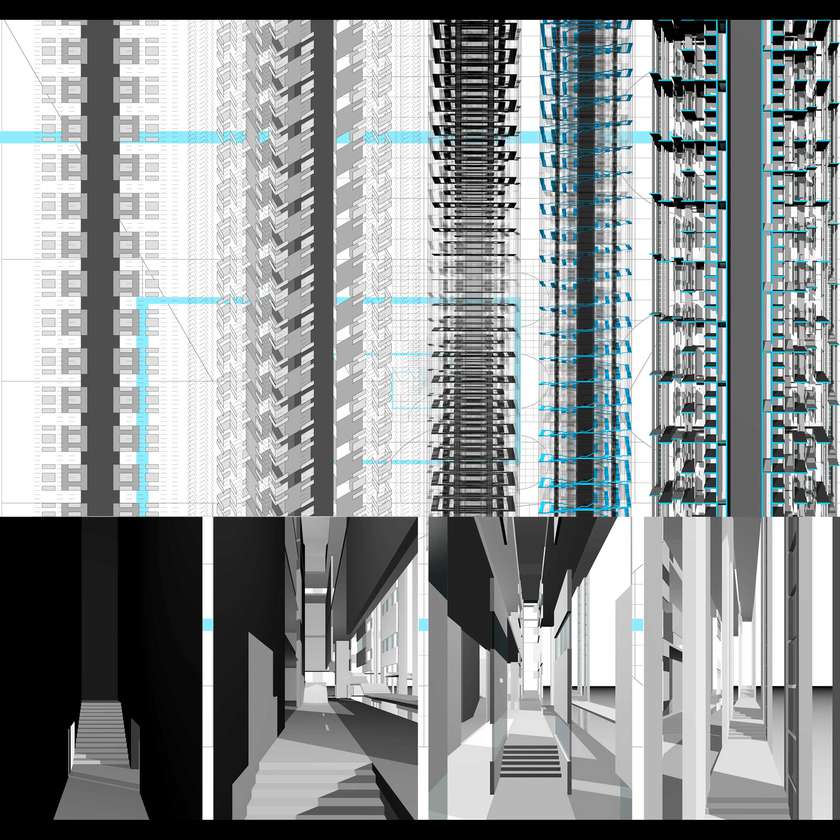
C_ Perceptive process: the tower_
A line traces out the boundary between two areas. It is an undefined limit in space and time; it is a shade that in the architectonic language becomes defragmentation. The defragmentation evolves in plan; the plan increases without limits in a symbolic way, to make the fourth dimension infinitive. The tower is a cemetery, a place of passage for an introspective way inside and more and more exposed outside, where the structure breaks up until to become empty.